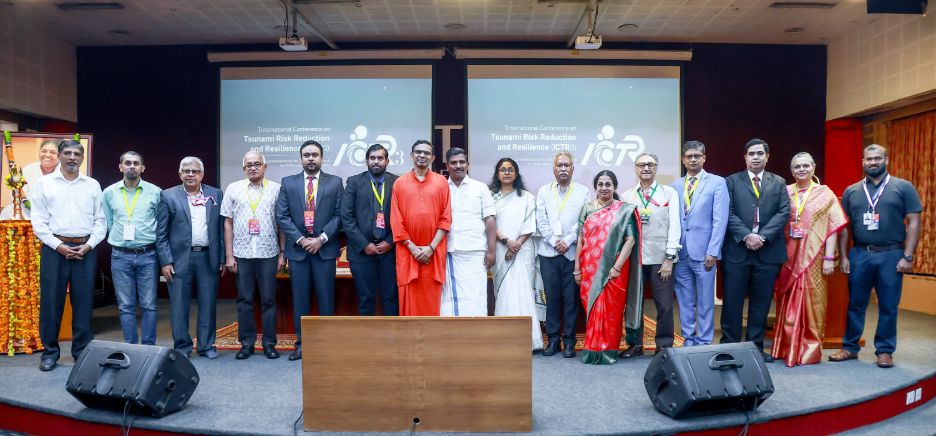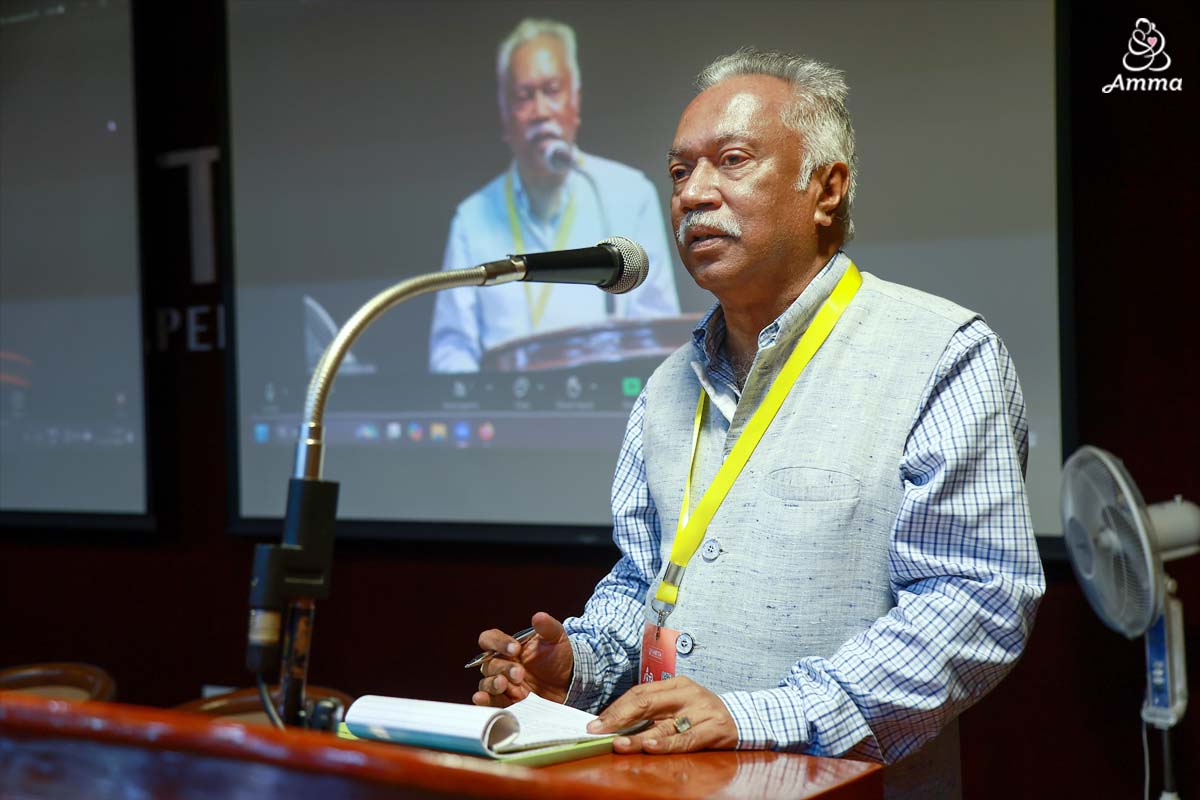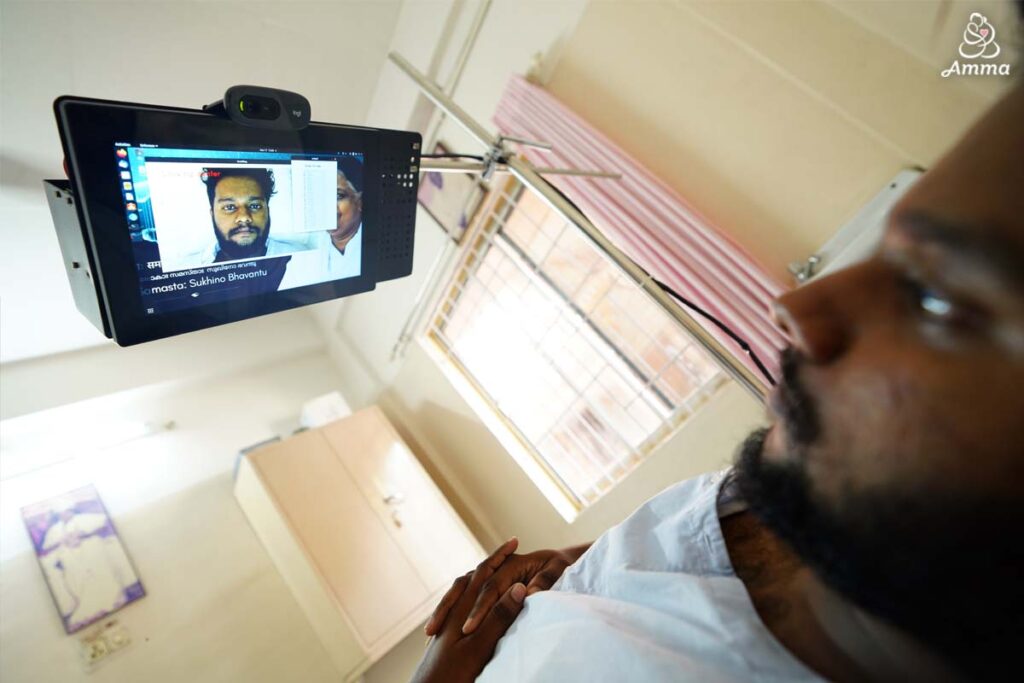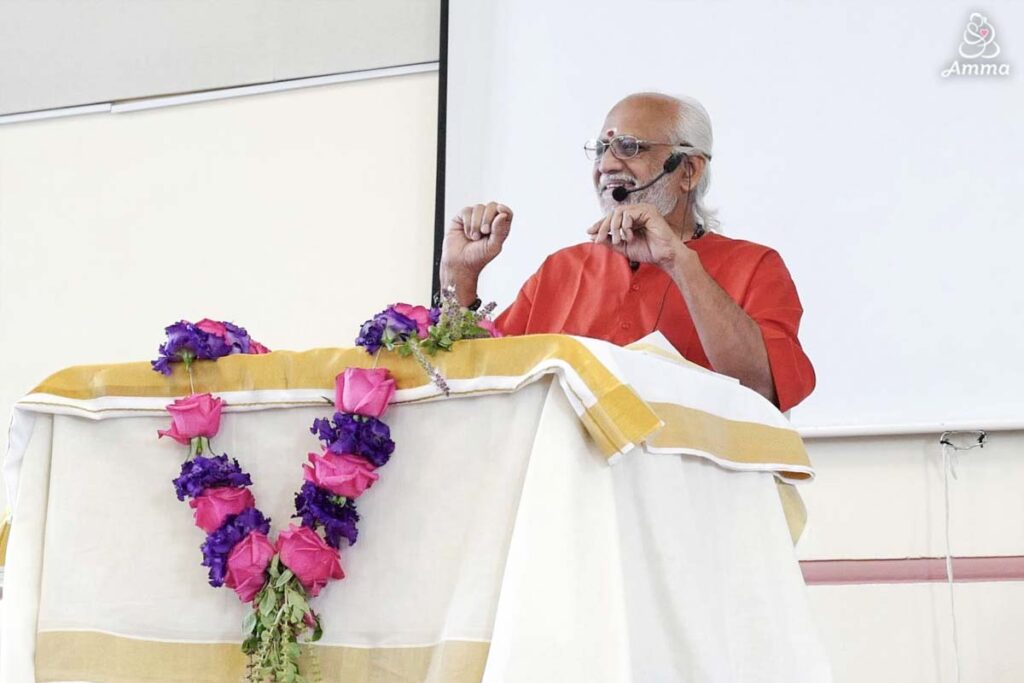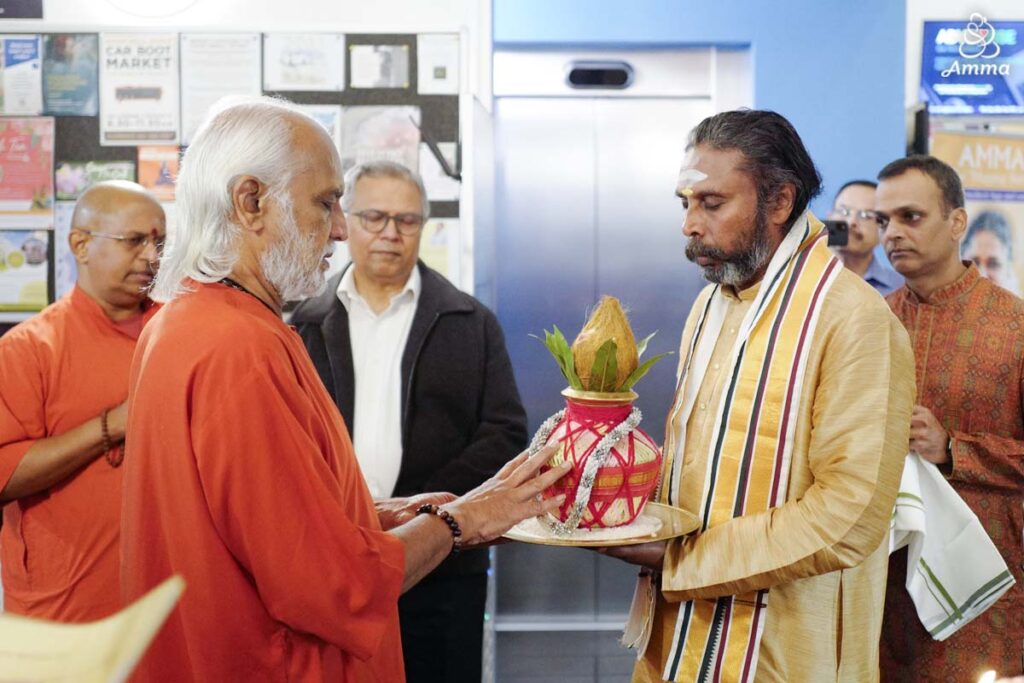On the morning of December 26, 2004, the world awoke to harrowing news of a massive earthquake, measuring 9.1-9.3 on the Richter scale, striking off the west coast of Sumatra, Indonesia.
What followed was a tragedy of unimaginable proportions, a series of devastating tsunamis that swept through 14 countries, leaving behind a trail of destruction, heartbreak, and despair. In mere hours, lives were forever changed, with close to 230,000 souls lost to the fury of nature.
Twenty years after that fateful day of the Indian Ocean Tsunami, Amrita University organised the International Conference on Tsunami Risk Reduction and Resilience to remember the impact of what happened and move forward today as humankind bears the brunt of rapidly increasing natural disasters.
Held from December 13 to 15, 2024, the gathering featured more than 40 eminent speakers from 15 countries who represented academia, government, industry, governmental, and nongovernmental organisations. Together, they exemplified that hope still exists if people are willing to join hands in the face of destruction, and, more importantly, build the strength and strategies to prevent such catastrophes.
“Two decades after the devastating disaster of 2004, it is crucial to hold conferences like this to reflect on our current preparedness for similar events, explore strategies to overcome challenges, and assess advancements in tsunami early warning systems,” said Swami Shubamritananda Puri in his address. He is one of Amma’s senior disciples and was in Amritapuri the day the Tsunami struck.
Even though the Ashram is in one of the places hardest hit in Kerala, Amma began immediate rescue and recovery within minutes in the village of Alappad. The relief work continued for months and then transformed into longterm recovery initiatives that lasted for years. By the end of 2006, we dedicated $46m (₹200 crore) to tsunami relief.
What made it unique was the holistic nature—every aspect of the tsunami survivors’ lives was considered and improved. People across Kerala, Tamil Nadu, Andaman Islands and Sri Lanka were reached with basic needs, shelter, counselling, new homes, skills training, and more.
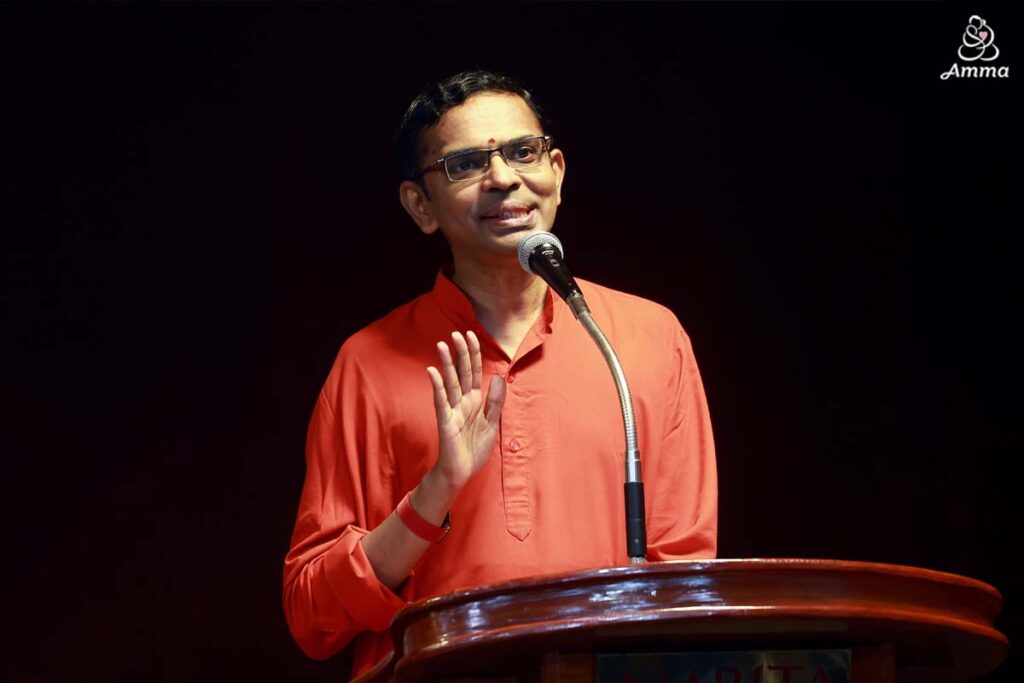
“Gathering here today serves as a poignant reminder of the lives lost, the strength of the survivors, and the unwavering spirit of communities that came together in the face of adversity,” said Dr. Maneesha Vinodini Ramesh.
She is the Provost of Amrita University and its UNESCO Chair on Experiential Learning for Sustainable Innovation & Development. Born in Alappad, she also took part in the Ashram’s instant on-the-ground relief work.
“The fury of nature, with its sheer unpredictability and magnitude, often surpasses human understanding and comprehension. Amid the darkness and despair brought by the 2004 Indian Ocean Tsunami, a radiant light emerged, not just for the people of Alappad but also for countless survivors.
“It was the compassionate leadership of our Chancellor, Sri Mata Amritanandamayi Devi, Amma. Her guidance and dedication laid the foundation for what stands today as one of the most multi-faceted, comprehensive and sustained disaster relief projects ever undertaken by a non-governmental organization.”
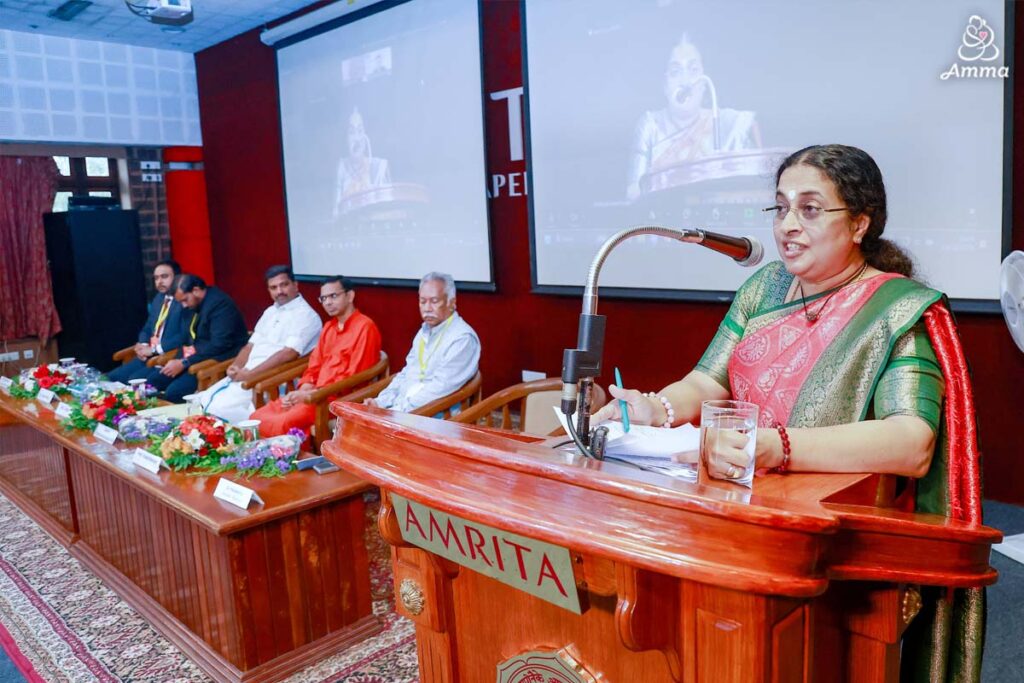
In 2005, Prof. Vinod Chandra Menon was nominated by the Prime Minister of India as a Founding Member of the country’s National Disaster Management Authority (NDMA). Today, as Co-chair of this conference’s organising committee, he spoke about the lasting impact of Amma’s relief work.
“Amma was actually able to immediately give the direction to people to come to higher ground and also evacuate the people from potentially tsunami-prone areas and tsunami-affected areas,” he said.
Over the course of three days, participants gathered to exchange knowledge, showcase resilience-building initiatives, and explore innovative solutions for disaster preparedness and risk reduction. They focused on the impact of climate change and proposed solutions through compassion-driven approaches, advancing technology that includes AI, hazard monitoring, and community awareness.
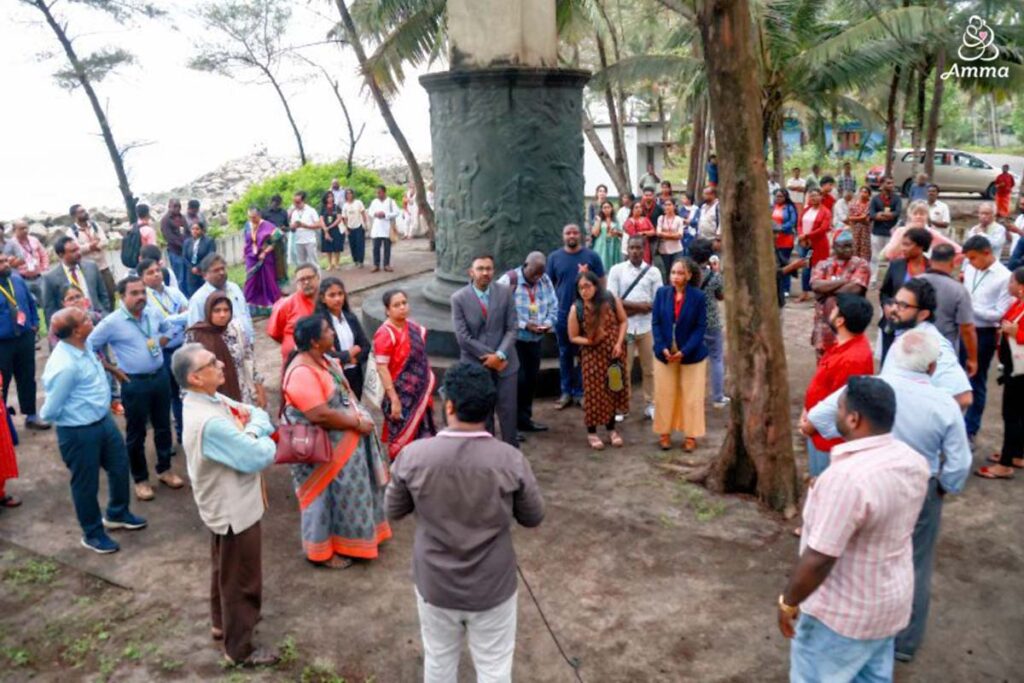
In alignment with Mother Earth, discussions emphasised maintaining traditional honour and respect for nature in combination with advancing technologies. They also highlighted that vulnerable communities, particularly women and children, continue to face unique challenges, further complicated by a lack of access to resources and psychosocial support.
Thematic areas included:
- Advancements in Tsunami Early Warning Systems
- Lessons from Two Decades of Tsunami Risk Management
- Disaster Preparedness and Community Resilience
- Mitigation Measures for Climate Change Impacts
- Climate Change Adaptation and Coastal Resilience
- Promoting the Blue Economy through Sustainable Practices
- Marine Biodiversity and Ecological Resilience
- Psychosocial Impacts of Disasters
- Disaster Risk Reduction and Preparedness Across Sectors
The conference concluded with a vision of solidarity to build community resilience in the face of our world’s mounting natural disasters. The Governor of Goa, Shri P.S. Sreedharan Pillai, was the Chief Guest at the Valedictory Ceremony and expressed appreciation for such a significant global event being held in a small region like Alappad.
He concluded: “This type of discussion will definitely encourage the ordinary citizens of this country that we are able to discuss these various aspects. With Amrita’s institutions comes the concept of mother, the most powerful word in the world – Amma.”
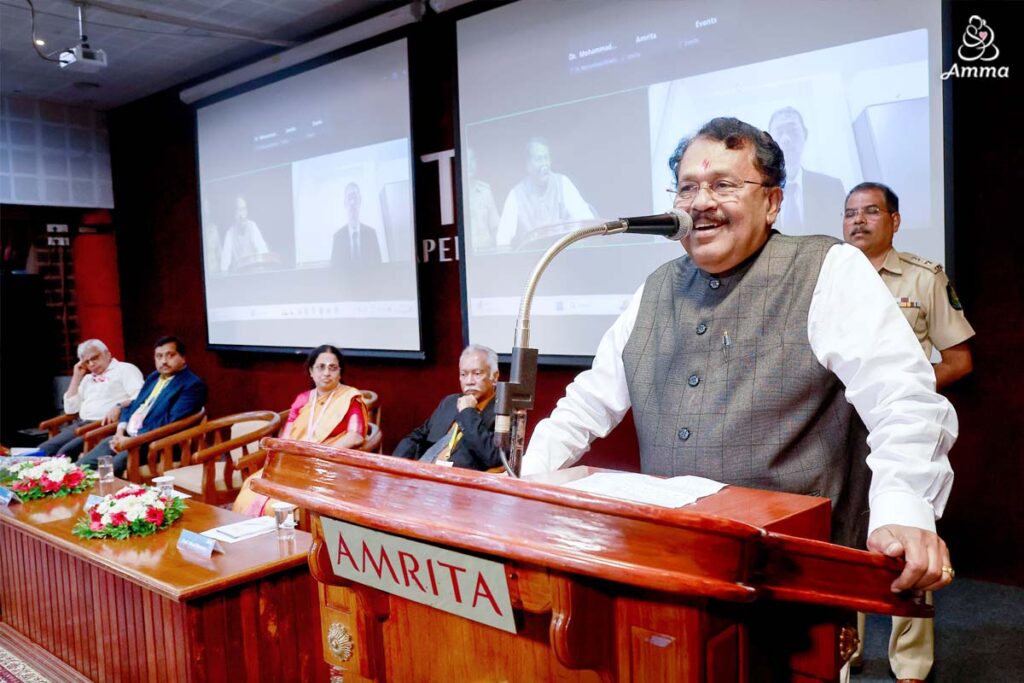
Other speakers at the closing session included Dr. M. Ravishankar, Principal of the Amrita School for Sustainable Futures; Dr. T.M. Balakrishnan, Director of the Indian National Centre for Ocean Information Services; Zoichiro Yasukawa, Chief of UNESCO’s Disaster Risk Reduction Unit; and Dr. Sudha Arlikatti, Head of Research at the Amrita School for Sustainable Futures.
The key participating organisations were many. At the international governmental level, they included UN ESCAP; UNESCO; UNESCO-IOC; Indian Ocean Tsunami Warning and Mitigation System Secretariat – Australia; National Disaster Management Authority, Maldives; Disaster Management Center, Sri Lanka; and the NOAA – US Pacific Tsunami Warning Center.
Taking part for the Govt of India were the National Disaster Management Authority (NDMA). National Institute of Advanced Studies (NIAS); Intergovernmental Coordination Group for the Indian Ocean Tsunami Warning and Mitigation System (ICG/IOTWMS); ESSO – Indian National Centre for Ocean Information Services (INCOIS); Indian Space Research Organisation (ISRO); National Institute of Disaster Management (NIDM); Council of Scientific & Industrial Research (CSIR).
